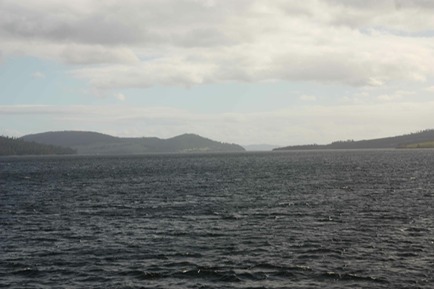
Cook commanded HMS Resolution on this voyage, and circumnavigated the Southern Ocean, crossing the Antarctic Circle on 17 January 1773. Resolution and Adventure became separated in fog on 8 February 1773. Cook had planned for this sort of contingency, and the agreed rendezvous in such circumstances was Queen Charlotte Sound in New Zealand.
Furneaux made his way there via Van Diemen’s Land, making landfall at South West Cape on 9 March and anchoring in Adventure Bay two days later. He took on wood and water until the 15th, then sailed north, making the earliest British chart of Tasmania’s east coast and naming St Patrick's Head, St Helen's Point, Bay of Fires Eddystone Point and Cape Barren before steering away for New Zealand on the 19th.
Furneaux was reunited with Cook in May, went on to visit Tahiti in August, lost the Resolution in October and made his way back to England, arriving at Spithead in July 1774. Cook continued to explore the Antarctic through the southern summer, reaching 71°10'S on 31 January 1774.
Cook was back in Adventure Bay on 26 January 1777 with the Resolution accompanied by the Discovery. A two day stay was followed by a run up Tasmania’s east coast that confirmed Furneaux's findings on his way to Hawaii and the Bering Strait.
William Bligh had been with Cook on that voyage, and was back en route to Tahiti on the Bounty on 21 August 1788 and the sloop Providence in a second attempt to collect breadfruit trees and other botanical specimens from the Pacific in 1792. He is alleged to have planted the first apple trees and grape vines in Tasmania on one of his four visits to Adventure Bay. In between Bligh’s two visits John Henry Cox cruised past the bay in 1790, planning to replenish wood and water but sailed past in bad weather and ended up discovering Great Oyster Bay.
By this stage, Adventure Bay was becoming a regular stopover for voyages that had just completed the storm tossed run across the southern Indian Ocean through The Roaring Forties. The bay provided shelter, fresh water and timber. Deep water and sheltered sandy beaches made movement between ship and shore easy and good fishing meant sailors could enjoy fresh food after weeks or months of salted meat and ship’s biscuit.
None of those who stopped to resupply their vessels up to this point realised Bruny was not part of the mainland. That discovery was left to the Frenchman Bruni d'Entrecasteaux, who sailed from France in late September 1791, sighted the Tasmanian coast on 20 April 1792 and anchored in Recherche Bay, named after his ship, three days later. The French expedition spent five weeks on a careful survey of the region, departing on 28 May 1792 with charts of Port Esperance, the Huon River, the D'Entrecasteaux Channel and Bruny Island to pursue the expedition’s main purpose, the search for the missing La Perouse party, last sighted in Sydney Harbour in 1788.